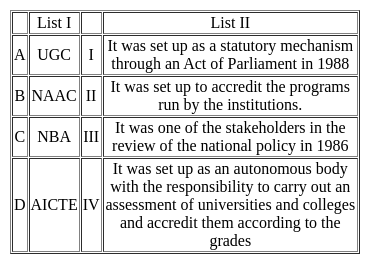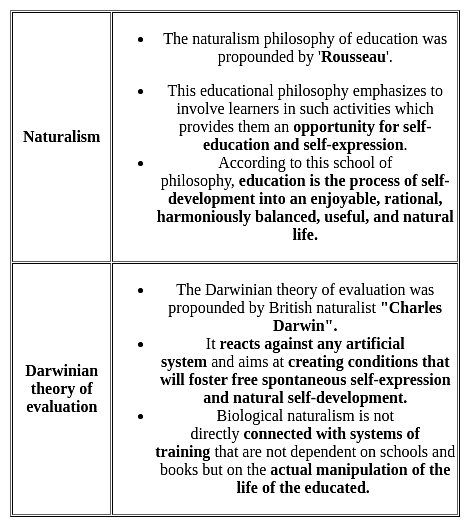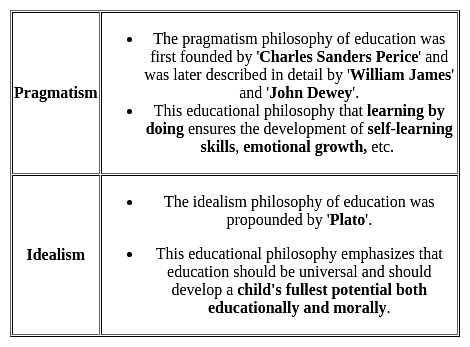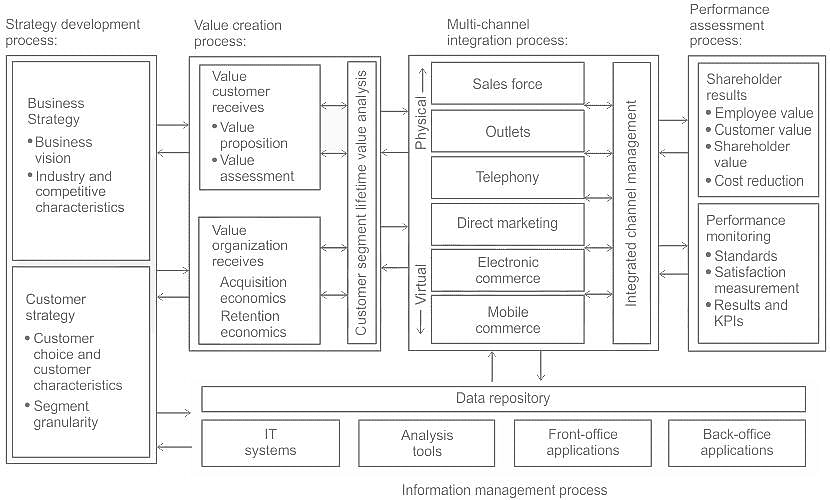UGC NET Paper 2 Education Mock Test - 6 - UGC NET MCQ
30 Questions MCQ Test UGC NET Mock Test Series 2024 - UGC NET Paper 2 Education Mock Test - 6
Match List I with List II

Choose the correct answer from the option given below:
Homework makes students self-study lovers, but at the same time, students -
| 1 Crore+ students have signed up on EduRev. Have you? Download the App |
The Department of Education of a State Government invites proposals from DIETs for the inclusion of items in the primary school curriculum which in turn involves BRCs and CRCs. This approach will be called
Which school of Philosophy in education will plead affinity with Darwin's theory of evolution?
According to NEP-2020, The goal of the school education regulatory system must not be -
Identify the qualitative research characteristics from the following :
(A) Exploring a problem and developing a detailed understanding of a central phenomenon.
(B) Having the literature review plays a minor role but justifying the problem.
(C) Describing a research problem through a description of trends.
(D) Collecting numeric data from a large number of people using instruments with
(E) Collecting data based on words from a small number of individuals.
Choose the correct answer from the options given below :
Which curricular model offers maximum academic freedom?
Which of the following are said to be style-related competencies of an effective teacher ?
A. Organized demeanour which means being orderly, clear and in control
B. Literacy which implies general knowledge as well as good at reading and writing
C. Self-efficacy which refers to a person's self-perceived capacity to perform a task
D. Flexibility which means being sensitive and lenient
E. Evaluating and providing feedback
Choose the correct answer from the option given below:
The scope for employing ICT support is relatively more in which of the following stages of research?
A. Problem formulation
B. Hypothesis making
C. Data collection
D. Data analysis
E. Data interpretation
Choose the correct answer from the options given below:
What happens when two organisations merge?
A. Shape of the organisation will change
B. Product orientation remains the same
C. Drastic decentralisation of authority
D. Discontinuous change does not take place
Choose the correct answer from the options given below:
What are the main levels of organizational transformation?
A. Downsizing
B. Geographical relocation
C. Contained changes
D. Power to external forces
Choose the correct answer from the options given below.
What does organizational transformation require?
The frequency distribution of a research data which is symmetrical in shape similar to a normal distribution but center peak is much higher, is
Intrinsic motivation as currently conceived is championed by.
The Samkhya theory of self, is based upon
Rather than occurring as discrete disorders it is possible that psychopathology may represent symptoms of.
Behavior in all its aspects can be studied scientifically through a single technique or approach known as
In Payne's five process model, performance assessment process is a part of
The short term memory can hold how many items at one time?
The maximum contribution to the process of socialization, in general comes from :
Which of the following is the most important characteristic of Open Book Examination system?
A definition that has a meaning that is deliberately assigned to some symbol is called:
Which of the following is normative integration in a group?
|
16 docs|120 tests
|





















